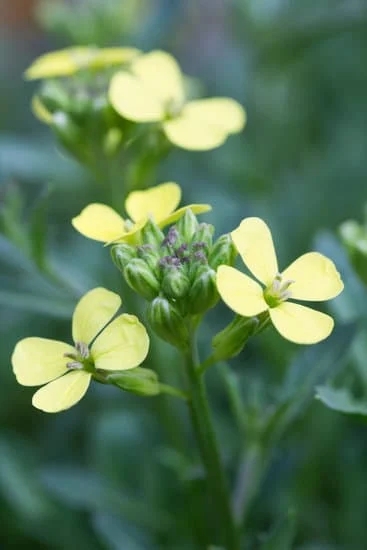Gardening is not only a rewarding hobby but also a beneficial one for both mental and physical well-being. In today’s fast-paced world, finding cheap and easy gardening ideas can be a game-changer for those looking to start their own green oasis. Whether you have limited space or a tight budget, there are creative ways to cultivate your own garden without breaking the bank.
Starting a garden allows you to connect with nature, reduce stress, and enjoy the fruits of your labor – quite literally. With the rise of urban living and smaller living spaces, container gardening has become increasingly popular as a way to bring greenery into homes. By using containers, even the smallest of spaces can be transformed into thriving gardens full of herbs, flowers, or vegetables.
In this article, we will explore various inexpensive and simple gardening ideas that anyone can implement. From upcycling household items for planting to starting plants from seeds for budget-friendly yields, there are plenty of options to create a lush garden without spending a fortune. So grab your gardening gloves and get ready to embark on an affordable journey towards creating your own little piece of paradise.
Container Gardening
One of the key benefits of container gardening is the ability to control the soil quality more easily than with traditional ground beds. You can choose specific potting mixes or amend the soil as needed to ensure optimal growing conditions for your plants.
Additionally, containers can help prevent common issues like weeds and soil compaction, leading to healthier and more productive plants overall. To keep costs down, consider upcycling containers from items you already have on hand, such as old buckets or wooden crates.
When it comes to cheap and easy gardening ideas for small spaces, vertical gardening can be a game-changer. By utilizing walls, fences, or trellises to grow plants vertically, you can maximize your growing area and create a visually appealing garden at the same time.
Vertical gardens are not only space-saving but also offer better air circulation which can help reduce common plant diseases. DIY projects like creating a pallet herb garden or a hanging gutter planter are simple ways to start vertical gardening without breaking the bank.
Upcycling Ideas
Gardening doesn’t have to be an expensive hobby, especially when you get creative with upcycling household items for your gardening needs. Upcycling is not only a sustainable practice but also a fun way to add personality to your garden.
One of the easiest ways to start is by using items like old buckets, cans, or even broken pots as planters. By giving these items a new life in your garden, you can save money on buying new planters while adding a unique touch to your outdoor space.
In addition to using containers for planting, there are numerous household items that can be repurposed for various gardening purposes. For example, old rain gutters can be mounted on a wall or fence to create a vertical herb garden. Not only does this save space, but it also adds a decorative element to your garden.
Another idea is to transform an old wooden pallet into a stylish and functional herb garden by painting it in vibrant colors and filling the slats with soil and plants. The possibilities are endless when it comes to upcycling for gardening.
When looking for cheap and easy gardening ideas, don’t overlook the potential of everyday items that you might already have at home. Old mugs or teacups can make charming planters for small herbs or succulents, while egg cartons are perfect for starting seeds before transplanting them into larger containers or the ground. By thinking outside the box and reimagining the use of ordinary objects, you can create a beautiful and budget-friendly garden that reflects your creativity and resourcefulness.
Seed Starters
Starting plants from seeds is not only a cost-effective way to kickstart your garden, but it also gives you the opportunity to witness the entire growth cycle of your plants. One of the cheapest and easiest gardening ideas is investing in a few seed starting trays or pots, along with some quality potting soil.
By starting your plants from seeds, you have more control over the varieties you want to grow and can ensure they are free from any harmful chemicals often present in store-bought seedlings.
Choosing the Right Seeds
When selecting seeds for your garden, consider the climate and growing conditions in your area. Opt for varieties that are well-suited for your region to increase their chances of thriving. Additionally, choose seeds from reputable sources to ensure quality and high germination rates. Many local nurseries or online stores offer a wide selection of seeds at affordable prices, making it easy to find the perfect match for your garden.
Creating a Seed Starting Schedule
To maximize success with seed starting, it’s essential to create a planting schedule based on the last frost date in your area. Different plants have specific timing requirements for when they should be started indoors before being transplanted outside. By planning ahead and starting seeds at the appropriate times, you can ensure healthy and robust plants ready for outdoor planting when the time comes.
Caring for Seedlings
Once your seeds have germinated and sprouted into seedlings, providing them with proper care is crucial for their development. Make sure they receive adequate light, warmth, and water to prevent them from becoming leggy or weak. Consider using grow lights or placing seedlings near a sunny window to promote strong growth.
Regularly check moisture levels in the soil and avoid overwatering, as this can lead to root rot. With proper attention and care, your budget-friendly garden will soon be flourishing with vibrant plants grown from seeds.
Overall, starting plants from seeds is not only an economical choice but also a rewarding one that allows you to take pride in nurturing your garden from its very beginnings. With a bit of planning and dedication, you can create a beautiful garden filled with an array of fruits, vegetables, flowers, and herbs without breaking the bank. So grab some seeds, get planting, and watch as your cheap and easy gardening ideas come to life before your eyes.
Low-Cost Soil Amendments
Soil quality is a crucial factor in the success of any garden. By ensuring your soil is rich in nutrients and has good texture, you can significantly improve the health and productivity of your plants. While purchasing commercial soil amendments can sometimes be costly, there are plenty of affordable ways to enrich your soil without breaking the bank.
One cheap and easy gardening idea is to start composting at home. Composting not only reduces waste but also provides nutrient-rich organic matter that can be added to your garden soil.
Another inexpensive method to improve soil quality is by using coffee grounds as a natural fertilizer. Coffee grounds are rich in nitrogen, which is essential for plant growth. You can simply sprinkle used coffee grounds around your plants or mix them into the top layer of soil. Additionally, eggshells are a great source of calcium for plants and can be crushed and added to the soil as a low-cost amendment.
Moreover, consider planting cover crops such as clover or legumes in your garden during the off-season. Cover crops help prevent erosion, suppress weeds, and add organic matter when tilled back into the soil. This practice not only improves soil fertility but also reduces the need for expensive fertilizers. With these simple and budget-friendly soil enhancement techniques, you can create a thriving garden without spending a fortune.
| Cheap Soil Amendment | Benefits |
|---|---|
| Composting | Provides nutrient-rich organic matter |
| Coffee Grounds | Rich in nitrogen; acts as natural fertilizer |
| Cover Crops | Prevents erosion, suppresses weeds, adds organic matter |
Vertical Gardening
Another inexpensive and creative DIY project for vertical gardening is the use of old wooden pallets. By attaching them vertically to a wall or fence, you can create a rustic and charming vertical garden.
Simply add some landscape fabric to the back of each pallet compartment, fill them with soil, and plant your favorite flowers or herbs. This not only adds visual interest to your outdoor space but also provides a functional and beautiful garden area that doesn’t take up much room.
For those looking for an even simpler method of vertical gardening, using hanging baskets is an affordable and effective option. By installing hooks on a wall or ceiling, you can hang baskets filled with flowers, trailing vines, or herbs.
This not only creates a lovely display but also saves precious floor space while adding depth and dimension to your garden area. With these cheap and easy gardening ideas for vertical gardening, anyone can enjoy the benefits of lush greenery even in the smallest of spaces.
| Cheap Vertical Gardening Ideas | Benefits |
|---|---|
| Repurpose old shoe organizers | Maximizes space in small areas |
| Use old wooden pallets | Creates a rustic look while being functional |
| Hanging baskets | Adds depth and dimension to the garden area |
Repurposing Tools
When it comes to gardening, having the right tools can make all the difference. But buying new tools can add up quickly, especially if you’re on a budget. That’s where repurposing old tools can come in handy.
Not only is it a sustainable practice that reduces waste, but it also allows you to get creative and find new uses for items you might have otherwise discarded. Here are some ideas for repurposing old tools for various gardening tasks:
- Old rakes or pitchforks can be transformed into rustic garden tool organizers by mounting them on a wall or fence. This not only keeps your tools organized and easily accessible but also adds a charming touch to your garden decor.
- Broken shovels or spades can be repurposed into plant markers by cleaning them up, painting the handles with weather-resistant paint, and labeling them with the names of your plants. This not only helps you keep track of what you’ve planted but also adds a unique DIY element to your garden.
- Wheelbarrows past their prime can be converted into mobile planting beds by filling them with soil and compost. This way, you can easily move your plants around to catch the sun or protect them from harsh weather conditions.
Repurposing old tools for gardening tasks is not only a cost-effective solution but also a fun way to personalize your garden experience. Whether you’re looking to add some charm to your garden decor or simply need practical solutions for storage and organization, there are plenty of creative ways to give new life to old tools.
So before you toss out that rusty trowel or worn-out watering can, think about how you might repurpose it for your next gardening project. With a little ingenuity and resourcefulness, you can turn mundane objects into functional and beautiful additions to your garden.
Remember, the key to successful repurposing is thinking outside the box and being willing to experiment with different ideas. So don’t be afraid to get creative and try out new ways of using old tools in your garden.
Not only will you save money by avoiding expensive purchases, but you’ll also create a more sustainable and personalized space that reflects your unique style and personality. Start looking around your home for old tools that could use a second life in the garden, and let your imagination run wild with possibilities.
Companion Planting
Benefits of Companion Planting
One of the key benefits of companion planting is pest control. Some plant combinations help repel pests or attract beneficial insects that prey on harmful ones, reducing the need for chemical insecticides. For example, planting marigolds alongside tomatoes can help deter nematodes, while growing basil near tomatoes can improve their flavor and repel pests like aphids.
Another advantage of companion planting is improved soil health. Certain plant combinations work together to enhance soil fertility by fixing nitrogen levels or providing mulch for moisture retention and weed suppression. For instance, planting legumes like beans or peas alongside corn can enrich the soil with nitrogen, benefiting both crops.
Popular Companion Plant Combinations
Some classic examples of companion plant combinations include the “Three Sisters” technique, where corn, beans, and squash are interplanted in a symbiotic relationship. The corn provides support for the beans to climb while the squash acts as ground cover, suppressing weeds and conserving moisture. Another popular combination is planting carrots with onions or leeks since the strong aroma of onions deters carrot flies.
Incorporating companion planting into your garden not only saves space but also creates a harmonious environment where plants support each other’s growth naturally. With careful planning and research on compatible plant pairings, you can take advantage of this age-old technique to achieve a productive and thriving garden without spending a fortune.
By implementing these cheap and easy gardening ideas, you’ll be on your way to reaping the rewards of a bountiful harvest while fostering a sustainable gardening practice.
Budget-Friendly Pest Control
Pest control is an essential aspect of gardening, as pests can wreak havoc on plants and prevent them from thriving. However, many gardeners may be deterred by the high cost of commercial pesticides and insecticides. Luckily, there are plenty of natural and inexpensive ways to control pests in the garden without breaking the bank. Here are some cheap and easy gardening ideas for budget-friendly pest control:
- Neem Oil: Neem oil is a natural insecticide that can effectively control a wide range of pests, including aphids, mealybugs, and spider mites. It works by disrupting the growth and reproduction of insects, making it an ideal option for organic gardeners.
- Companion Planting: By strategically planting companion plants in your garden, you can naturally repel pests without the need for chemical pesticides. For example, marigolds can deter nematodes, while planting basil near tomatoes can ward off tomato hornworms.
- DIY Insect Traps: Create your own insect traps using simple household items like empty plastic bottles or jars filled with a mixture of apple cider vinegar and dish soap. Place these traps around your garden to attract and capture common pests like fruit flies or caterpillars.
In addition to these methods, practicing good garden hygiene by removing debris and dead plants can also help prevent pest infestations. By embracing these cheap and easy gardening ideas for budget-friendly pest control, you can maintain a healthy and thriving garden without relying on expensive chemicals or treatments. Remember that a little creativity and resourcefulness can go a long way in keeping your garden pest-free while staying within your budget.
Conclusion
Gardening doesn’t have to be expensive or complicated. With a little creativity and resourcefulness, anyone can create a beautiful garden on a budget. In this article, we have explored various cheap and easy gardening ideas that are perfect for beginners or those looking to save money. From container gardening to upcycling household items for planters, there are plenty of options for creating a thriving garden without breaking the bank.
Starting a garden can not only provide fresh produce and flowers but also numerous health benefits. Gardening is known to reduce stress, improve mood, and increase physical activity. By taking advantage of the cheap and easy gardening ideas discussed in this article, anyone can enjoy the rewards of growing their own plants at home.
In conclusion, whether you have limited space, a tight budget, or simply want to try something new, gardening is an accessible and rewarding hobby for everyone. With the tips provided in this article, you can start your own budget-friendly garden today. So roll up your sleeves, grab some seeds and containers, and get ready to enjoy the pleasures of gardening with these cost-effective and straightforward techniques. Happy gardening.
Frequently Asked Questions
How Do I Make My Garden Nice on a Budget?
Making your garden nice on a budget can be achieved through various ways. One method is to plant perennials that will come back year after year, reducing the need to constantly replant.
Using mulch in your garden helps retain moisture, suppress weeds, and improve soil quality, which can be a cost-effective way to keep your garden looking nice. Additionally, shopping for plants at the end of the season or from local plant sales can help you save money while still adding beauty to your garden.
What Is the Cheapest Ground Cover for a Garden?
When looking for the cheapest ground cover for a garden, one option to consider is using organic materials like wood chips or pine straw. These can be sourced locally or even for free in some cases, making them a budget-friendly ground cover choice.
Another affordable option is using low-growing plants like clover or creeping thyme, which not only provide coverage but also add color and texture to your garden.
What Is the Lowest Maintenance Garden?
For those seeking the lowest maintenance garden possible, selecting native plants is a good starting point. Native plants are well adapted to the local climate and soil conditions, requiring less water and care compared to exotic species. Planting ground covers like succulents or moss can help minimize weeding and watering needs while still providing greenery in your garden.
Adding mulch around plants can further reduce maintenance by suppressing weeds and conserving moisture in the soil. Finally, incorporating hardscaping elements like gravel pathways or rock gardens can decrease the need for regular upkeep while adding visual interest to your outdoor space.

Welcome to my gardening blog! I am passionate about plants and enjoy sharing my knowledge and experiences with others. In this blog, I will write about everything related to gardening, from tips on how to get started to updates on my own garden projects.





